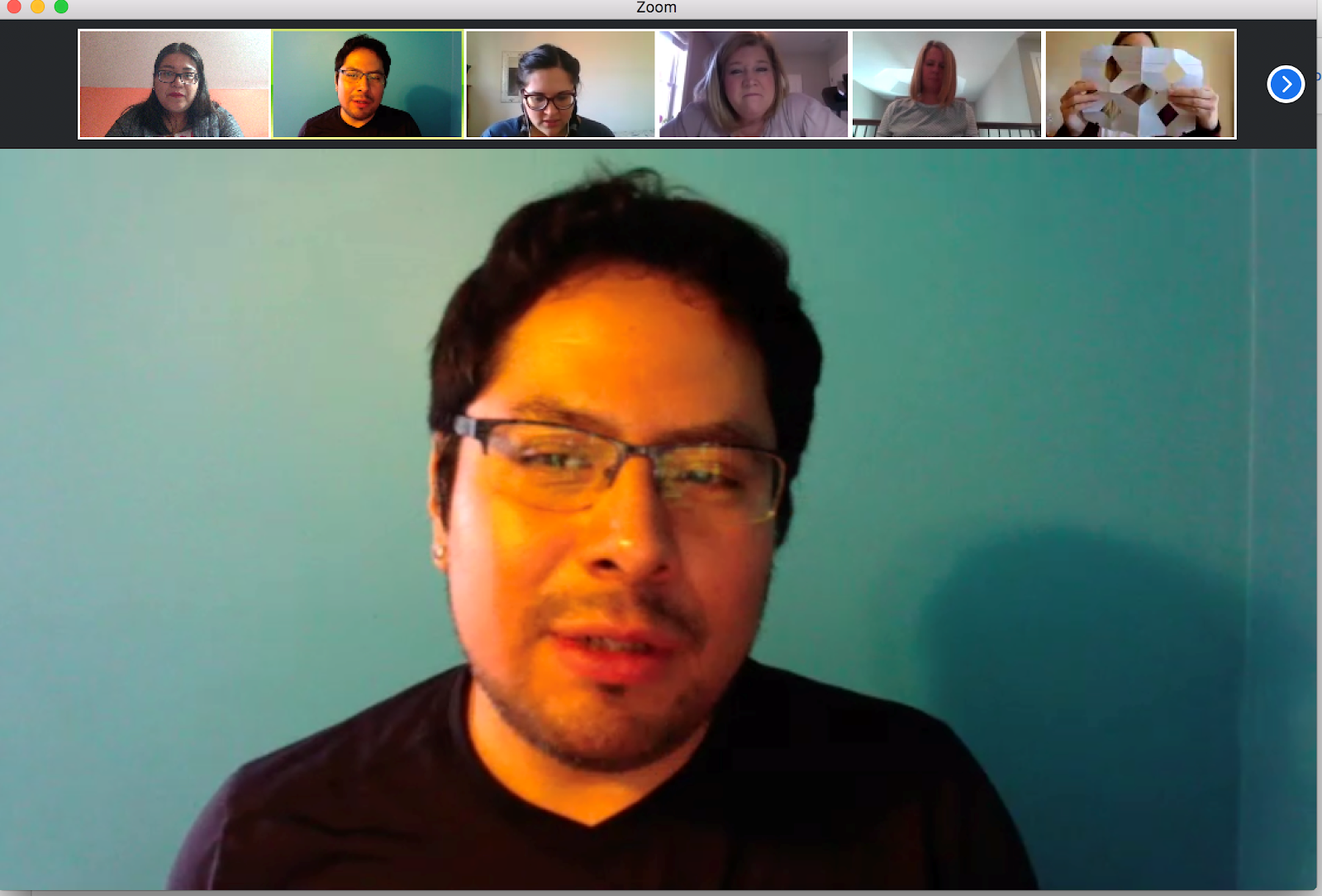The National Center for Urban Education (NCUE) awards Illinois State University faculty grant funding to redesign their educational courses to reflect the current situations of urban schools in Chicago, Decatur, and Peoria. One of the main components of these redesign courses happens through a clinical visit to the urban site in order to authentically learn about the community and schools. In Chicago, ISU partners with five neighborhoods: Little Village, Pilsen, Auburn Gresham, East Garfield Park, and Albany Park. With our current situation due to COVID-19, all planned clinical visits to Chicago, Decatur, and Peoria were cancelled.
In Chicago, our roles under normal circumstances involve collaborating with ISU faculty, ISU Chicago Teacher Education Pipeline staff (CTEP), and community liaisons to create an experience for visiting education students from Illinois State University. Ideally, this experience reinforces the students’ decision to teach in our neighborhoods as they consider becoming Chicago Public School (CPS) teachers and becoming part of urban education. We never pass up an opportunity to uplift the neighborhood of Little Village. We tailor each visit based on the students’ majors, the professor’s topics of interest, and strive to highlight all that makes Little Village a wonderful place to teach. However, as each visit is unique, there is much work that goes into each trip from all aspects and making the switch to virtual neighborhood visits was not an easy task.
When we were confronted with the challenge to engage current Illinois State University students via Zoom, at first, we had no idea what to do. This was an unknown territory to most, and disappointing to those looking forward to visiting Little Village and us as hosts. However, now we had to find a way to bring an entire neighborhood experience into students’ homes, through a computer, while hoping for a strong internet connection.
With professors still looking for that neighborhood experience, the game plan could not stay the same. Our first virtual visit was with Kristal Lewis-Pratl and her special education class. Lewis-Pratl remembered, “The day after we learned that schools were closing, Ana and Sandra reached out to me with possible virtual plans for our upcoming CDG trip. I was so impressed with how quickly they problem-solved and considered ways to create a virtual experience in place of our planned visit to Farragut High School and Little Village. Within days, we developed a strategy and curated resources for students to access in advance of their presentation.”
To begin the transition of in-person to virtual, our focus had to change. We could no longer rely on the same recipe for a successful experience. We could not expect delicious food to bring excitement, or the murals seen on community walks to captivate, or the lengthy talks with community scholars to create the same meaningful experience. We now had to bring a lesson that was engaging and practical. In addition, we wanted to consider the workload the ISU students themselves were confronting and allow for the obvious stress that this health concern was creating in their individual lives. We did not know their home situation, their internet access, their time constraints, and the emotional toll on their mental health. The last thing we wanted to create was an unsafe environment, and most importantly, a stale talk that was not valuable.
For this visit planned with Lewis-Pratl and her special education students, we invited Henry Cervantes, a practitioner and professor of restorative justice practices, one of his many roles in Little Village. However, one of the most profound moments came at unexpected and in unplanned ways. Very much like during our regular in person visits, it was the students’ intentions and desire to learn that really makes the experience. Lewis-Pratl noted, “Henry Cervantes was able to conduct a virtual peace circle, which was exactly what our students needed in the moment. Not only did this build their repertoire of skills, but ultimately attended to their personal needs to connect and feel peace as well.” Through Cervantes’ lesson, students were able to see a different perspective to the same struggle they face daily. Gaining insight into what the neighborhood they hope to teach one day is going through, as they go through their own difficulties themselves, created an emotional connection that transcended distance and touch.
We will continue to strive for a meaningful connection despite this current crisis. Lewis-Pratl overall enjoyed this virtual CDG visit and shared, “Ana did a beautiful job highlighting the history of Little Village and connected to the present-day impact of the novel Coronavirus in their community. Sandra then concluded with the support that ISU offers to our teacher candidates who choose CPS once they earn licensure. I have loved collaborating with Sandra and Ana the last three semesters and could not have been more impressed with the ways they transformed our experience.” Through this experience Cervantes said, “I’ve learned to adapt my teaching style to an online platform. To communicate virtually is another great way to practice listening and speaking.”
With this experience under our belt, we have created other virtual presentations scheduled to bring the community and community scholars into these virtual ISU classes for the remainder of the semester. We stand and will continue to support our Chicago neighborhood of Little Village and unite our collective efforts with the students and professors of Illinois State University.


